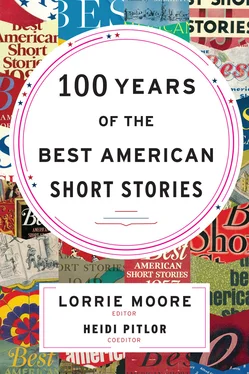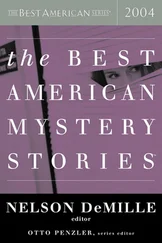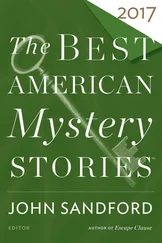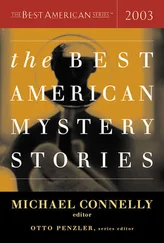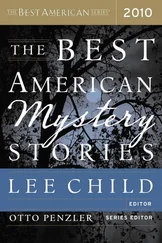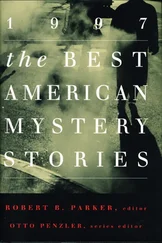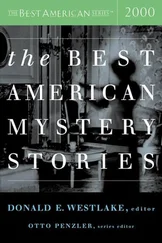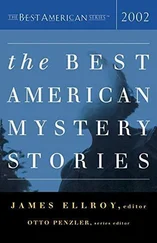It’s a cinch Doc went up in the air and swore he’d make Jim suffer. But it was a kind of a delicate thing, because if it got out that he had beat Jim up, Julie was bound to hear of it and then she’d know that Doc knew and of course knowin’ that he knew would make it worse for her than ever. He was goin’ to do somethin’, but it took a lot of figurin’.
Well, it was a couple days later when Jim was here in the shop again, and so was the cuckoo. Jim was goin’ duck-shootin’ the next day and had come in lookin’ for Hod Meyers to go with him. I happened to know that Hod had went over to Carterville and wouldn’t be home till the end of the week. So Jim said he hated to go alone and he guessed he would call it off. Then poor Paul spoke up and said if Jim would take him he would go along. Jim thought a w’ile and then he said, well, he guessed a half-wit was better than nothin’.
I suppose he was plottin’ to get Paul out in the boat and play some joke on him, like pushin’ him in the water. Anyways, he said Paul could go. He asked him had he ever shot a duck and Paul said no, he’d never even had a gun in his hands. So Jim said he could set in the boat and watch him and if he behaved himself, he might lend him his gun for a couple of shots. They made a date to meet in the mornin’ and that’s the last I seen of Jim alive.
Next mornin’, I hadn’t been open more than ten minutes when Doc Stair come in. He looked kind of nervous. He asked me had I seen Paul Dickson. I said no, but I knew where he was, out duck-shootin’ with Jim Kendall. So Doc says that’s what he had heard, and he couldn’t understand it because Paul had told him he wouldn’t never have no more to do with Jim as long as he lived.
He said Paul had told him about the joke Jim had played on Julie. He said Paul had asked him what he thought of the joke and the Doc had told him that anybody that would do a thing like that ought not to be let live.
I said it had been a kind of a raw thing, but Jim just couldn’t resist no kind of joke, no matter how raw. I said I thought he was all right at heart, but just bubblin’ over with mischief. Doc turned and walked out.
At noon he got a phone call from old John Scott. The lake where Jim and Paul had went shootin’ is on John’s place. Paul had came runnin’ up to the house a few minutes before and said they’d been an accident. Jim had shot a few ducks and then give the gun to Paul and told him to try his luck. Paul hadn’t never handled a gun and he was nervous. He was shakin’ so hard that he couldn’t control the gun. He let fire and Jim sunk back in the boat, dead.
Doc Stair, bein’ the coroner, jumped in Frank Abbott’s flivver and rushed out to Scott’s farm. Paul and old John was down on the shore of the lake. Paul had rowed the boat to shore, but they’d left the body in it, waitin’ for Doc to come.
Doc examined the body and said they might as well fetch it back to town. They was no use leavin’ it there or callin’ a jury, as it was a plain case of accidental shootin’.
Personally I wouldn’t never leave a person shoot a gun in the same boat I was in unless I was sure they knew somethin’ about guns. Jim was a sucker to leave a new beginner have his gun, let alone a half-wit. It probably served Jim right, what he got. But still we miss him round here. He certainly was a card!
Comb it wet or dry?
In 1930, the same year that his wife died, series editor Edward O’Brien met Ruth Gorgel, a poor sixteen-year-old German girl. To the surprise and dismay of his family and friends, he married her soon after. They had two daughters, and O’Brien began to travel yet more in order to drum up work and money to support his growing family.
He became a highly public figure, both in England, where he often hosted visiting Rhodes Scholars, and in the United States, where he traveled on grueling lecture tours. He once wrote to Ruth that he rarely had time to go to the bathroom or enjoy more than fifteen minutes to himself. He was treated like a celebrity and juggled dozens of interviews, lectures, and business lunches, sometimes daily. He was asked in one interview how he found the time to read so many stories. He replied that over time, his reading speed had increased. He also said, “You don’t have to swallow an oyster to know that it’s bad.”
He continued to live in England, removed from the daily realities of the Depression. He hardly mentioned the dire situation in the United States in his forewords. He did take note, though, when sales of the series began to plummet. His Best American and Best British story volumes were combined in 1934 as a result of low sales of both. Smaller magazines began to go under. In the 1930s, just three weekly general-interest magazines maintained a circulation of over one million: The Saturday Evening Post, Liberty , and Collier’s . But “glossy” magazines — especially women’s magazines, many of which featured fiction — held their ground.
During the Depression, southern writing, often dark and agrarian, came to the fore. In 1931 O’Brien wrote, “The old pretentiousness is gone. The false sentiment is gone. The ‘hard-boiled mask’ is gone. The reader is now confronted with two or three people and a situation.” He went on: “The American scene is dusty and colorless. Its beauty and meaning depend on line and mass rather than on colour and decorative detail. The beauty of American life is not exterior. It is a hidden beauty which requires patient search to reward the finder.”
Also during this time, stories became more political and socially conscious. Writers like Theodore Dreiser, Erskine Caldwell, Meridel LeSueur, and John Steinbeck explored injustices associated with class, gender, and race. O’Brien did not hide his political preferences, at least when it came to short fiction. In 1935 he admitted, “During the past four or five years, it is on the left rather than on the right that I have found the most fruitful interpretation of American life by the short story writer.”
Some critics continued to clamor for O’Brien to choose stories with more intrigue and plot. In 1936 he responded: “What I do object to is the short story that exists for the sake of the plot. The plot, after all, is merely a skeleton which the story clothes. The story which exists for the sake of the plot is merely a grinning and repulsive skeleton without flesh and blood.”
One “small” magazine that was started during this time made a significant impact on the publishing world: Story . Martha Foley and her husband, Whit Burnett, founded the magazine while they were serving as foreign correspondents in Vienna. Foley wrote, “We did not plan to spend our lives at ephemeral day-to-day reporting. We wanted to produce literature.” Foley and Burnett’s first idea was to present Story as a catalogue of potential new writers for fiction editors. The first publication, sixty-seven mimeographed copies, opened with their statement of purpose: “[ Story will] present short narratives of significance by no matter whom and coming from no matter where… [it will be] a sort of proof-book of hitherto unpublished manuscripts.” Foley and Burnett were soon flooded with submissions, and Story became a bona fide bimonthly magazine.
O’Brien was a fan of Whit Burnett’s own fiction and was enthusiastic about Story right away. His support bolstered the magazine’s reputation and visibility. Random House contacted Foley and Burnett and offered to publish Story when the two returned to the United States. The new publishing house, primarily a reprint house at the time, drew a flood of new talent with the publication of Story . Foley and Burnett were the first to publish a number of writers who went on to achieve major success: Charles Bukowski, Erskine Caldwell, Tennessee Williams, J. D. Salinger, William Saroyan, and John Cheever, among others.
Читать дальше
